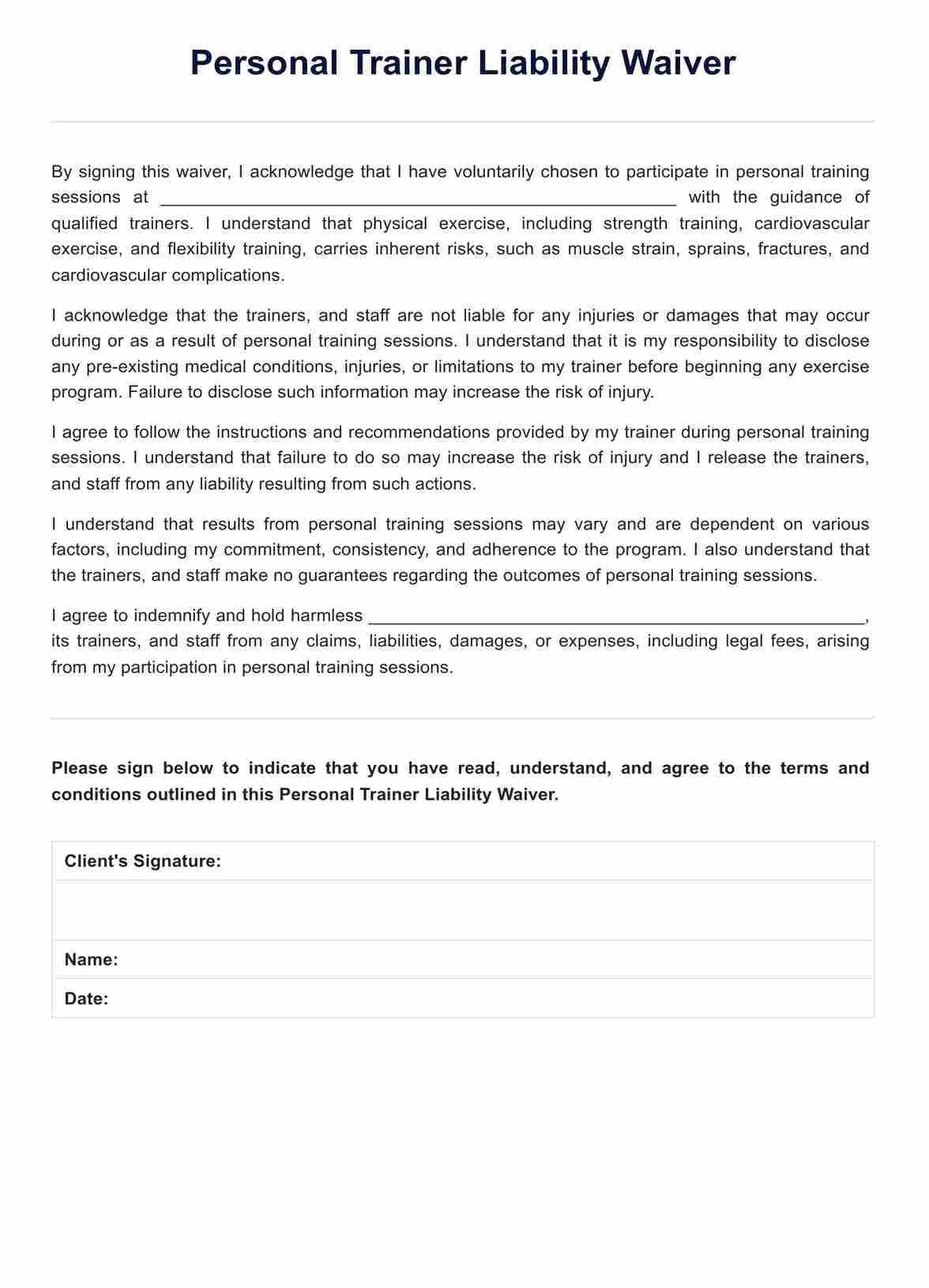Personal trainers and fitness facilities commonly use liability waivers to protect themselves from legal liability in the event of injuries or accidents during training sessions.

Personal Trainer Liability Waiver Form
Protect yourself during fitness training sessions. Acknowledge potential risks with our Personal Trainer Liability Waiver!
Use Template
Personal Trainer Liability Waiver Form Template
Commonly asked questions
Before commencing any physical training with clients, personal trainers should implement liability waivers to ensure that both parties understand the inherent risks involved and their respective responsibilities.
Reviewing and signing a Personal Trainer Liability Waiver typically takes a couple of minutes, during which the trainer and client can discuss any questions or concerns before proceeding with the training program.
EHR and practice management software
Get started for free
*No credit card required
Free
$0/usd
Unlimited clients
Telehealth
1GB of storage
Client portal text
Automated billing and online payments











